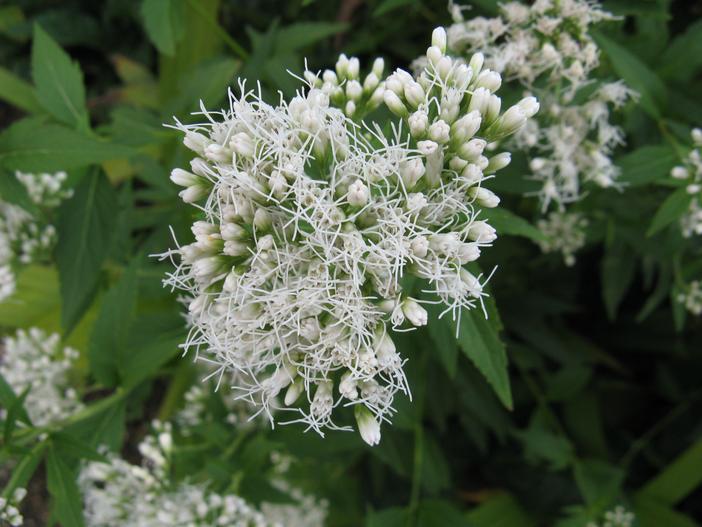Fragrant Eupatorium
(Eupatorium japonicum)
Fragrant Eupatorium (Eupatorium japonicum)
/
/

KENPEI
CC BY-SA 3.0
Image By:
KENPEI
Recorded By:
Copyright:
CC BY-SA 3.0
Copyright Notice:
Photo by: KENPEI | License Type: CC BY-SA 3.0 | License URL: http://creativecommons.org/licenses/by-sa/3.0/ | Uploader: KENPEI | Publisher: Wikipedia Commons
























Estimated Native Range
Summary
Eupatorium japonicum, commonly known as fragrant eupatorium, is an herbaceous perennial plant native to open woodlands and grassy areas in China, Taiwan, Japan, and Korea. It typically grows to a height of 20-79 inches (50-200 cm) with upright stems that culminate in simple or corymbose inflorescences. The florets can be white, red-purple, or pink, and the plant is in bloom from June to November, offering a long-lasting floral display. The flowers are modest in size but can be quite showy when planted en masse. In its native habitat, Eupatorium japonicum thrives in moist, well-drained soils, often in areas with dappled sunlight or partial shade.
Fragrant eupatorium is valued for its extended blooming period and its ability to attract pollinators such as butterflies. It is used in border plantings, wildflower gardens, and as part of naturalistic landscaping. This plant prefers consistently moist soil and can tolerate a range of light conditions from full sun to part shade. It is relatively low-maintenance but should be monitored for potential spread, as it can self-seed and become invasive in some regions. Gardeners should be aware that Eupatorium japonicum contains tumorigenic pyrrolizidine alkaloids, which can be toxic if ingested in large quantities.CC BY-SA 4.0
Fragrant eupatorium is valued for its extended blooming period and its ability to attract pollinators such as butterflies. It is used in border plantings, wildflower gardens, and as part of naturalistic landscaping. This plant prefers consistently moist soil and can tolerate a range of light conditions from full sun to part shade. It is relatively low-maintenance but should be monitored for potential spread, as it can self-seed and become invasive in some regions. Gardeners should be aware that Eupatorium japonicum contains tumorigenic pyrrolizidine alkaloids, which can be toxic if ingested in large quantities.CC BY-SA 4.0
Plant Description
- Plant Type: Herb
- Height: 3-6 feet
- Width: 1.5-3 feet
- Growth Rate: Moderate
- Flower Color: Pink, Purple
- Flowering Season: Summer, Fall
- Leaf Retention: Semi-deciduous
Growth Requirements
- Sun: Full Sun, Part Shade
- Water: Medium
- Drainage: Medium
Common Uses
Bee Garden, Border Plant, Butterfly Garden, Low Maintenance
Natural Habitat
native to open woodlands and grassy areas in China, Taiwan, Japan, and Korea
Other Names
Common Names: Japanese Boneset, Joe Pye Weed, Japanese Thoroughwort
Scientific Names: , Eupatorium japonicum, Eupatorium chinense f. tripartitum, Eupatorium chinense subsp. tozanense, Eupatorium chinense var. angustatum, Eupatorium chinense var. dissectum, Eupatorium chinense var. simplicifolium, Eupatorium chinense var. tozanense, Eupatorium fortunei f. aureoreticulatum, Eupatorium fortunei var. angustatum
GBIF Accepted Name: